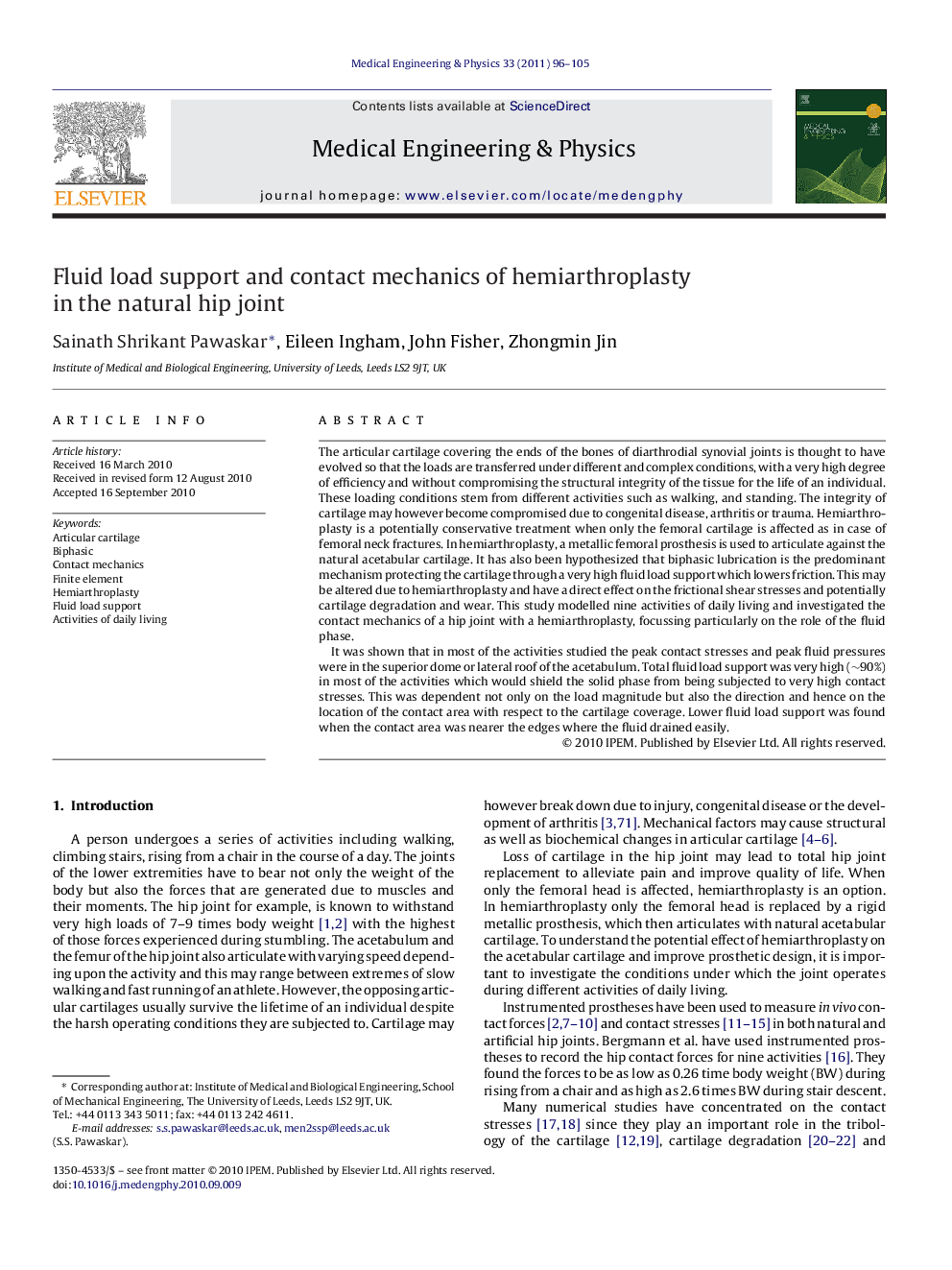| کد مقاله | کد نشریه | سال انتشار | مقاله انگلیسی | نسخه تمام متن |
|---|---|---|---|---|
| 876885 | 910870 | 2011 | 10 صفحه PDF | دانلود رایگان |

The articular cartilage covering the ends of the bones of diarthrodial synovial joints is thought to have evolved so that the loads are transferred under different and complex conditions, with a very high degree of efficiency and without compromising the structural integrity of the tissue for the life of an individual. These loading conditions stem from different activities such as walking, and standing. The integrity of cartilage may however become compromised due to congenital disease, arthritis or trauma. Hemiarthroplasty is a potentially conservative treatment when only the femoral cartilage is affected as in case of femoral neck fractures. In hemiarthroplasty, a metallic femoral prosthesis is used to articulate against the natural acetabular cartilage. It has also been hypothesized that biphasic lubrication is the predominant mechanism protecting the cartilage through a very high fluid load support which lowers friction. This may be altered due to hemiarthroplasty and have a direct effect on the frictional shear stresses and potentially cartilage degradation and wear. This study modelled nine activities of daily living and investigated the contact mechanics of a hip joint with a hemiarthroplasty, focussing particularly on the role of the fluid phase.It was shown that in most of the activities studied the peak contact stresses and peak fluid pressures were in the superior dome or lateral roof of the acetabulum. Total fluid load support was very high (∼90%) in most of the activities which would shield the solid phase from being subjected to very high contact stresses. This was dependent not only on the load magnitude but also the direction and hence on the location of the contact area with respect to the cartilage coverage. Lower fluid load support was found when the contact area was nearer the edges where the fluid drained easily.
Journal: Medical Engineering & Physics - Volume 33, Issue 1, January 2011, Pages 96–105